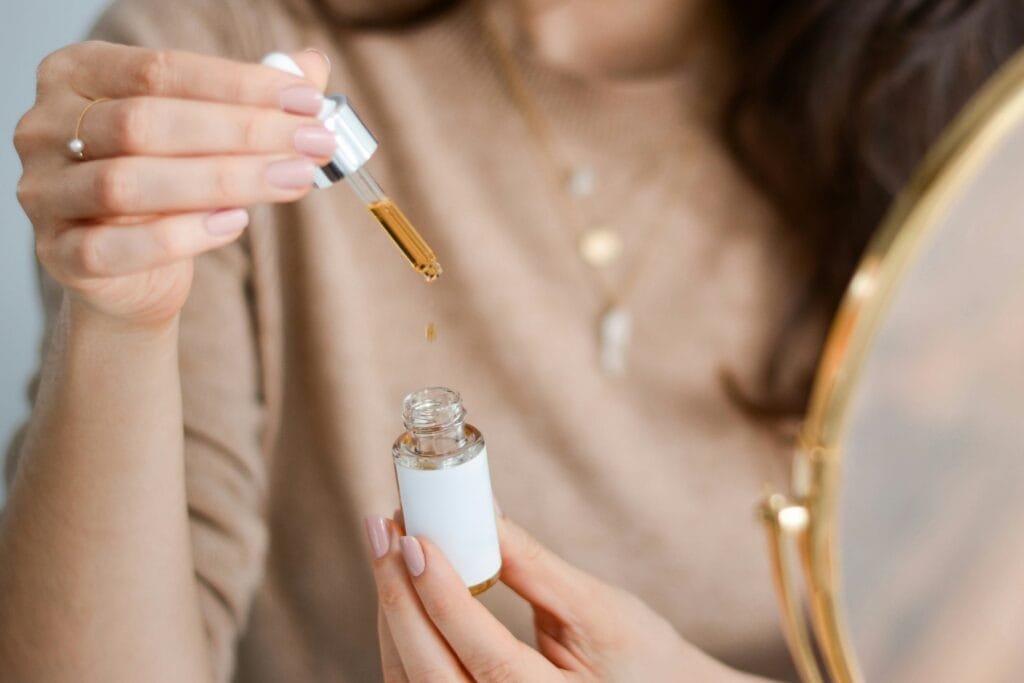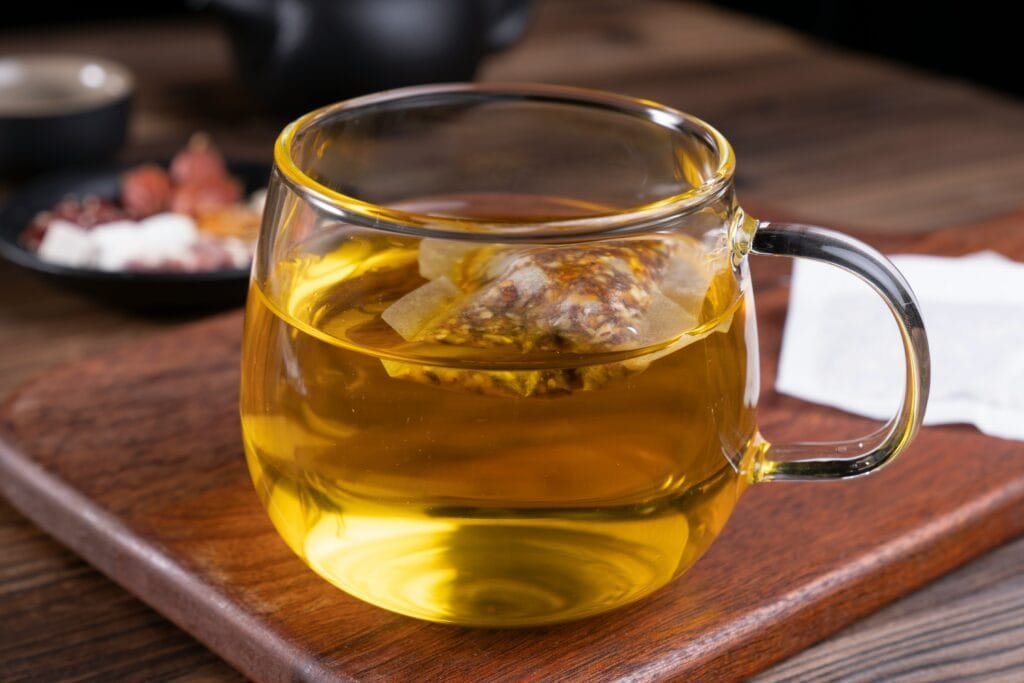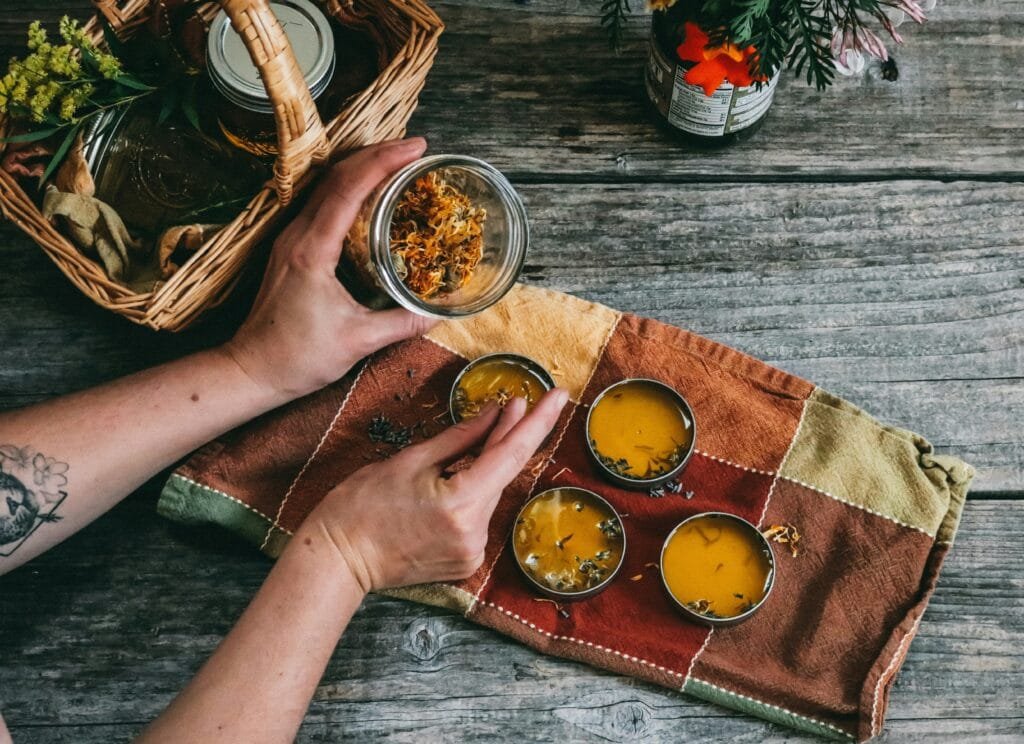There’s something special about walking out to your garden, clipping a few sprigs of herbs, and knowing you can turn them into something that can support your health. Growing your own herbal remedies is one of the most satisfying ways to connect gardening with everyday wellness. It’s practical, grounding, and it adds that extra layer of comfort knowing you had a hand in creating what’s in your medicine cabinet.
The beauty of herbal remedies is that they don’t have to be complicated. Many of the most useful herbs are ones you can grow in a pot on your patio or pick up fresh at the grocery store. Think chamomile, mint, ginger, garlic, lavender, and even catnip (which isn’t just for cats!). With these, you can make teas, tinctures, or salves right at home! I love caring for my little herb garden, knowing that it’s both a nurturing hobby and provides nurturing care.
These are simple preparations that people have been relying on for centuries, and while they are no substitute for medicines, they have properties that can help improve aspects of your health! (Remember: please be sure to check with your healthcare provider before trying these, as they may not interact well with certain medicines).
Let’s walk through some easy ways to bring your garden to support your health.
Herbal Teas: Comfort in a Cup
When most people think of herbal remedies, tea is the first thing that comes to mind. A warm mug feels like a hug, and the health benefits are an added bonus. Making herbal teas at home is incredibly simple. All you really need is fresh or dried herbs, hot water, and a few minutes to steep.
Chamomile Tea
Chamomile is famous for its calming properties. It’s the herb you want on hand when you’ve had a stressful day or when sleep just isn’t coming easily.
How to make it:
- Use 1–2 tablespoons of dried chamomile flowers (or 2–3 tablespoons if using fresh).
- Pour boiling water over the herbs and let steep for 5–10 minutes.
- Strain, sip, and let its floral flavor soothe you.
Peppermint Tea
Mint is a garden favorite because it’s so easy to grow (sometimes a little too easy—keep it in a pot unless you want it to take over!). Peppermint tea is great for digestion and can help with mild headaches.
How to make it:
- Toss a handful of fresh peppermint leaves into a mug.
- Cover with boiling water and steep for 5–7 minutes.
- Strain and enjoy. Add a little honey if you like sweetness.
When I don’t have fresh peppermint leaves, I use regular mint leaves. These can be less “cooling” due to lower levels of menthol and instead provide a milder, sweeter flavor. You can use other types of mint (such as spearmint) if you’re not a big fan of that sharper menthol flavor!
Ginger Tea
Fresh ginger root makes one of the most comforting teas, especially if you’re feeling under the weather. It’s warming, helps with nausea, and gives your immune system a little boost.
How to make it:
- Slice 1–2 inches of fresh ginger root into thin pieces.
- Simmer in 2 cups of water for 10–15 minutes.
- Strain, add honey if desired, and drink warm.
For a refreshing kick, I love steeping my ginger tea with sliced lemon, which is how my mom always made it for me growing up. The lemon imparts a mild tartness that tastes fantastic and gives a boost of antioxidants and Vitamin C!

Herbal Tinctures: Potent and Practical
Tinctures sound intimidating, but they’re really just concentrated extracts made by soaking herbs in alcohol (or sometimes glycerin or vinegar). They’re a way to preserve herbs so you can use them long after the growing season is over.
You only need a few drops at a time, making them an easy addition to your wellness routine.
Garlic Tincture
Garlic isn’t just for cooking! It’s known for supporting the immune system and can be especially helpful during cold and flu season.
How to make it:
- Peel and chop several cloves of fresh garlic.
- Place them in a clean glass jar and cover with high-proof vodka (enough to completely submerge the garlic).
- Seal the jar and store it in a cool, dark place for 4–6 weeks, shaking it gently every few days.
- Strain out the garlic and store the tincture in a dark glass bottle with a dropper.
- Use a few drops in water or tea when you feel run down.
Catnip Tincture
Yes, catnip is famous for making cats silly, but it’s also calming for humans. It can ease tension and help with sleep.
How to make it:
- Chop fresh catnip leaves and flowers.
- Fill a jar about halfway with the herb, then cover completely with vodka.
- Seal and let it sit in a cool, dark place for 4 weeks.
- Strain and store in a dropper bottle.
- A few drops in warm water before bed can help you unwind.
Lavender Tincture
Lavender is another go-to for stress and sleep. A tincture is handy because you can keep it on your nightstand and use it whenever you need a little calm.
How to make it:
- Fill a jar about one-third full with dried lavender flowers.
- Cover with vodka until all the flowers are submerged.
- Seal and store for 4–6 weeks, shaking occasionally.
- Strain into a dark glass dropper bottle.
- Use a few drops in tea or water, or simply place a drop under your tongue.
Herbal Salves: Healing from the Outside In
Salves are topical remedies that you rub onto the skin. They’re usually made by infusing herbs into oil, then blending the oil with beeswax to create a soothing balm. Salves are wonderful for minor cuts, scrapes, or sore muscles.
Calendula and Lavender Salve
Calendula is known for its skin-soothing properties, and when paired with lavender, you get a gentle, multipurpose salve that’s perfect for dry skin or little irritations (and smells lovely!).
How to make it:
- Fill a jar halfway with dried calendula flowers and dried lavender.
- Cover completely with olive oil or coconut oil.
- Seal and let it infuse in a sunny window for 2–4 weeks, shaking occasionally. (Or use the quick method by gently heating the herbs and oil in a double boiler for 2–3 hours.)
- Strain the oil through cheesecloth.
- Melt 1 ounce of beeswax in a double boiler, then stir in 1 cup of your infused oil.
- Pour into small tins or jars and let cool.
Mint Muscle Rub
Mint’s natural cooling effect makes it a great choice for sore or tired muscles.
How to make it:
- Infuse dried peppermint leaves in olive oil for 2–3 weeks.
- Strain and mix with melted beeswax (same ratio as above: 1 ounce beeswax per 1 cup infused oil).
- For an extra boost, add a few drops of peppermint essential oil before pouring into tins.
- Apply to tired muscles for a cooling, soothing effect.
Building Your Herbal Medicine Cabinet
Once you start experimenting, you’ll quickly realize that herbal remedies don’t need to be complicated or fancy. With a few common herbs, you can create a small medicine cabinet filled with teas for comfort, tinctures for long-term wellness, and salves for everyday bumps and bruises.
Here are a few ideas to get you started:
- For stress relief: Chamomile tea, lavender tincture, or a lavender/calendula salve.
- For immunity: Garlic tincture and ginger tea.
- For digestion: Peppermint tea or catnip tincture.
- For skin support: Calendula salve or mint rub.
The best part is, you can grow many of these herbs right at home. Even a few pots on a windowsill can supply you with plenty of mint, chamomile, or lavender to experiment with.
Final Thoughts
Herbal remedies bring together two things many of us crave: a connection with nature and mindful ways to care for ourselves. These remedies are not a replacement for medical care, of course, but they can be a supportive addition to a balanced wellness routine.
Start with one herb you love, experiment with a recipe or two, and before long, you’ll have your own little garden-to-medicine cabinet collection. It’s one of the coziest, most empowering ways to blend gardening with your everyday life and general wellness.
Similar Blogs We Recommend:
The Surprising Health Benefits of Ginger: Nature’s Digestive Hero
Disclaimer: This blog shares general fitness and wellness tips based on personal experience and research. It is not intended to substitute medical advice, diagnosis, or treatment. Always consult your physician or a qualified healthcare provider before starting any new workout, diet, or health routine. Use of any information on this site is at your own risk.
The nutritional content shared on this blog are based on personal experience and general wellness principles. They are not intended to diagnose, treat, cure, or prevent any health condition. Please consult with a healthcare provider or registered dietitian before making any significant dietary changes, especially if you have allergies or health conditions.



